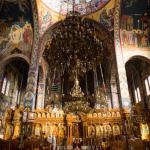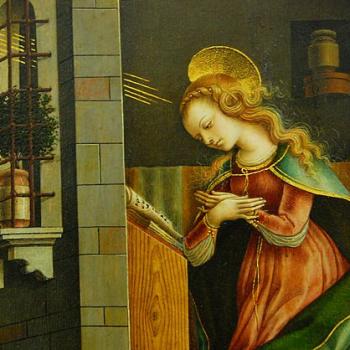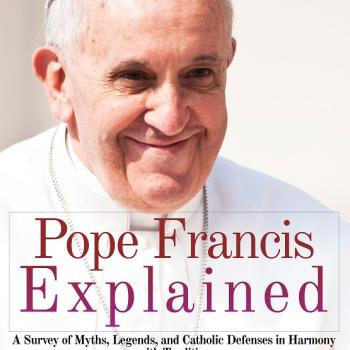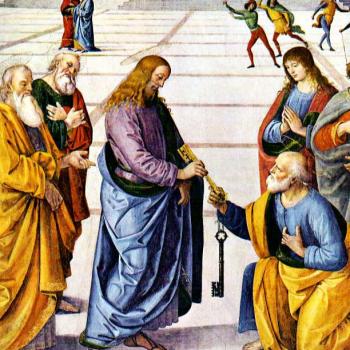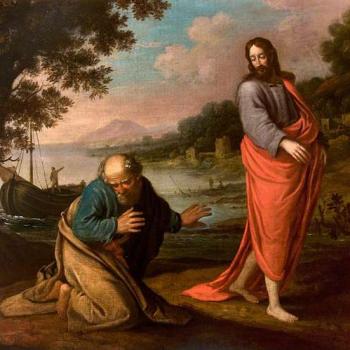+ the Ecclesiological Absurdity of Anti-Catholic-Type Eastern Orthodox Arguments Against Roman Primacy & Apostolicity
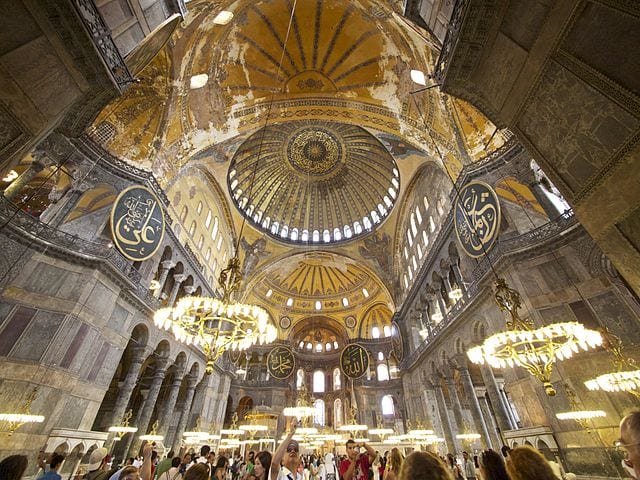
[this is a slightly abridged and revised version of a paper that was originally written and posted online in 1997, and was also part of the older version of my book on Eastern Orthodoxy. See the greatly expanded and modified revised version, co-written by Byzantine Catholic Fr. Deacon Daniel Dozier]
*****
Orthodox Anti-Catholicism
A vocal Orthodox minority nowadays expresses itself in an alarming fashion, which might be described as “anti-ecumenical,” or, in some instances, “anti-Catholic.” This group is too often drawn from converts from evangelical Protestantism or from Catholicism (Orthodoxy, like Catholicism, is experiencing a wave of conversions of late). From this highly polemical perspective, the Catholic Church is regarded as a radically corrupt church which has departed from the apostolic “mainstream,” so to speak, rather than as a “sister Church,” or as one of the “two lungs” of the Body of Christ, as in the Catholic and mainstream ecumenical Orthodox outlook.
According to some of these critics, even the validity of Catholic sacraments (including baptism) is denied: an extremely serious charge reminiscent of ancient schism of Donatism. The time has come for Catholics to respond to at least some of these severe criticisms (1 Peter 3:15), and in so doing there is always the risk of appearing “unecumenical” or uncharitable. But what follows presupposes what the Second Vatican Council and Pope St. John Paul II have taught about respect for Orthodoxy and ecumenism. Such a reply is especially necessary with regard to certain fairly indisputable historical facts which sorely need to be recounted, as a sort of “Church history refresher course.”
An ecumenical Catholic (and we are all called to be that) finds it difficult to respond in the magnificent spirit of Orientale Lumen to a polemical statement such as the following , from a book by Fr. Peter E. Gillquist (former staff member of the Protestant evangelistic group Campus Crusade): Becoming Orthodox (Brentwood, Tennessee: Wolgemuth & Hyatt, 1989, pp. 71-72):
Rome stepped away from apostolic tradition in 1054. She left one thousand years of unity in the Church behind. No, she’s not all wrong – not for a moment. But she is saddled with a papacy and a collection of dogmas that simply do not square with holy tradition. And my opinion is that she is moving further away from Orthodox Christianity, not closer . . . It’s time for Rome to come back home to the unity of the Church and the faith of the Apostles and holy fathers which she once held so dear. It’s time to come back to the fullness of holy tradition!
Elsewhere (p. 57) Fr. Gillquist exclaims:
[T]he whole Roman Church ended up dividing itself from the New Testament Church . . . the Roman Church drifted farther and farther from its historic roots. There are inevitable consequences to deviation from the Church. The breaking away of the Roman Church from the historic Church would prove no exception.
The Christian Activist, a free newspaper edited by Frank Schaeffer, Orthodox convert and son of the revered evangelical evangelist and author Francis Schaeffer, is perhaps the leading purveyor (among the laity) of the thought of the anti-ecumenical wing of Orthodoxy. In any given issue, one can expect to find at least a dozen highly derogatory (and sometimes factually incorrect) references to Catholicism, scattered throughout articles and letters to the editor.
One article that sadly typifies the “anti-Catholic” material which regularly appears in this paper, was written by Fr. Alexey Young, and entitled “Florence 2000?: An Open Letter to All Roman Catholics and Orthodox on the State of Rome and Orthodoxy” (The Christian Activist, vol. 7, October 1995, pp. 16-20, 47-51). This article is itself an excerpt from Fr. Young’s book The Rush to Embrace (Redding, California: Nikodemos Orthodox Publication Society, 1995). Remarkable — almost unbelievable — assertions about the Catholic Church abound in this article:
Why is Catholicism a radically different Church than the Orthodox Church? . . . some Orthodox leaders . . . are either shockingly naive about the reality of Rome, or are hoping that no one will notice the dangerous circus to which they are trying to hitch the Orthodox Church, the very Ark of Salvation. (p. 17)
The Latin or Western Church, known today as the Roman Catholic Church, was once part of the Universal Church. (p. 17)
Orthodox patriarchs, bishops, priests, and theologians – all you who actively pursue a policy of rapprochement with Rome: Beware. You are trying to bring the Orthodox Church into a lion’s den of unbelievable malignancy. You cannot save the Catholic Church; but the Catholic Church can and will contaminate and then destroy you. (p. 47)
Like a branch that has been cut from a living tree, Rome had the outward appearance of life for many centuries after the Schism, even though lifegiving sap had really ceased to flow in her. Today, however, even the outward appearance testifies that this branch is indeed dead. (p. 48)
The Orthodox Church is the Catholic Church, in the full and true meaning of the word. She has never departed from the revealed Faith and never compromised the Truth. (p. 48)
Pope John Paul II . . . must somehow shore up his Church, his papacy. He is now turning in the direction of the east and the ancient, historic Patriarchates of Orthodoxy. He is looking for a blood transfusion for his dying Church. (p. 48)
Many have passively tolerated this dangerous and false ecumenism . . . We are . . . filled with self-infatuation and self-importance. And this has become a substitute for real spiritual life. It is precisely this – the soul-numbing and worldly subjectivity of the Roman Catholic Church – that we find so attractive, so enticing. (p. 51)
The Church of the First Millennium
In the Catholic view, the Church was institutionally united (allowing for some temporary schisms) up to 1054, under the supreme ecclesiological jurisdiction of the papacy (a complex issue which cannot be explored within the purview of this article).
In the ecumenical Orthodox perspective, the Church of the first millennium is also regarded as one and united, but under a system of conciliarism, in which all bishops — including the pope — were ultimately equal in authority. The pope was and is granted a primacy of honor (“first among equals”), but not of universal jurisdiction, or headship. The Catholic Church is accepted as part of the universal Church today in this framework, notwithstanding (according to them) aberrations and various heretical tenets (e.g., the Filioque, which has to do with the relationship of the Holy Spirit to the Father and the Son, as expressed in the Nicene Creed).
For the unecumenical Orthodox, on the other hand, the Catholic Church ceased to be part of the universal Church after 1054, and has lost — according to the most severe faction — apostolic succession and valid sacraments, as evidenced by the above quotes.
The Necessity of the Roman See for the Preservation of Doctrinal Orthodoxy
The Catholic response to the latter position is a demonstration that the Roman See and the papacy — irregardless of their ultimate status vis-a-vis the government of the Universal Church (it doesn’t affect the validity of the argument) — were absolutely necessary for the purpose of upholding Christian orthodoxy (literally, correct doctrine), and preserving apostolic tradition. A view that the East was always “primary” and orthodox, was the apostolic “mainline” (over against Roman and Western orthodoxy), and never forsook the apostolic tradition, is incoherent and self-defeating. Neither the Catholic nor the Orthodox ecumenical outlooks entail this logical conundrum. Only the “anti-Catholic” Orthodox view does, based on the following historical facts:
Schisms Prior to 1054
Both East and West acknowledge wrongdoing in the tragic events leading up to 1054 when the schism finalized. Nevertheless, it is undeniably true that the West (and especially the Roman See) had a much more solid and consistent record of orthodoxy. For example, the Eastern Church split off from Rome and the Catholic Church on at least six occasions before 1054:
-
- The Arian schisms (343-398)
- The controversy over St. John Chrysostom (404-415)
- The Acacian schism (484-519)
- Concerning Monothelitism (640-681)
- Concerning Iconoclasm (726-787 and 815-843)
This adds up to 231 out of 500 years in schism (46% of the time)! In every case, Rome was on the right side of the debate in terms of what was later considered “orthodox” by both sides. Thus, the East clearly needed the West and the papacy and Rome in order to be ushered back to orthodoxy.
Final Court of Appeal
The Roman See, with its bishop, the pope, was the supreme arbiter of orthodoxy in the Church universal in the early centuries. There is abundant historical evidence for this, but suffice it to say that even many of the East’s most revered Church fathers and Patriarchs sought refuge in Rome (theologically and/or geographically), for example: St. Athanasius (339 to 342), St. Basil the Great (371), St. John Chrysostom (404), St. Cyril of Jerusalem (430), and St. Flavian of Constantinople (449).The East all too frequently treated its greatest figures much like the ancient Jews did their prophets, often expelling and exiling them, while Rome welcomed them and restored them to office by the authority of papal or conciliar decree.
Many of these venerable saints (particularly St. John Chysostom), and other Eastern saints such as (most notably) St. Ephraim, St. Maximus the Confessor, and St. Theodore of Studios, also explicitly affirmed papal supremacy. The popes functioned as the “supreme court” of the Church, and they presided over (personally or through papal legates) and ratified the Ecumenical Councils of the Church. One may argue that this was mere custom or a particularly “pragmatic,” “governmental” aspect of the primacy of honor, but whatever view one takes, the historical facts of the papacy as “final court of appeal” are undeniable.
Rome and the New Testament Canon
Moreover, the Church of Rome was central in the development of the New Testament canon, as Protestant scholar Adolf Harnack notes:
The New Testament canon . . . is primarily traceable to the Church of Rome. It has now been proved that the whole series of New Testament books in their canonical and universally accepted versions were derived from Rome. Finally, new evidence of the greatest value indicates that from the third century the versions of the West, i.e. the Roman texts of the New Testament, entered into the texts of the Oriental biblical manuscripts. These data clearly prove that the Eastern Churches corrected their own versions by comparison with the New Testament received from Rome in those days. It was with special reference to Rome that an authentic list of Bishops extending back to the Apostles was prepared. (History of Dogma [1899], German edition, vol. 1, p.443, cited in Asmussen, Hans, et al, The Unfinished Reformation, translated by Robert J. Olsen, Notre Dame, Indiana: Fides Publishers Association, 1961, 87-88)
An Overview of Early Eastern and Western Dealings with Various Heresies
Marcionism rejected the Old Testament and its God, said to be different from the God of love in the New Testament, and made a complete dichotomy between law and grace. Marcion (d. c. 160) came from northeastern Turkey and migrated to Rome but was promptly excommunicated in 144. The heresy was checked by 200 in Rome but lasted for several centuries in the East.
Montanism was an apocalyptic sect which denied the divinely-established nature of the Church. Montanus, who began prophesying in 172, came from central Turkey (which became the heresy’s center of operations). Opposition to Montanism was spearheaded by Pope Eleutherus (175-89), and it was condemned by Pope Zephyrinus (199-217).
Docetism was the belief that Jesus Christ was not a real man, but only appeared to be so. The origins of Docetism derive from Hellenistic, Gnostic, and oriental notions that matter is essentially evil, which came out of Alexandria. Later christological heresies emanating from this school (such as Apollinarianism, Eutychianism, and Monophysitism) were influenced by Docetism.
Modalism (also known as Sabellianism) denied the full Personhood of all three Persons of the Trinity, and believed that God operated through mere “modes” or the transferral of power. Theodotus (2nd cent.) came from Byzantium to Rome, only to be excommunicated by Pope Victor (c. 189-98). His disciple, also named Theodotus (early 3rd century) was condemned by Pope Zephyrinus (198-217). Artemon (3rd century) was teaching in Rome, c. 235, but was excommunicated. Sabellius (fl. 215) was excommunicated by Pope Callistus I.
Novatianism was a rigorist schism, stating that persons who fell away under persecution or who were guilty of serious sin could not be absolved. Its theology was otherwise orthodox. Novatian (d. 258), a Roman presbyter, started the schism in 250. In 251 it was condemned by a Roman Synod and Pope Cornelius, and Novatian became an “antipope”. His views were approved at Antioch.
Donatism held that sacraments administered by unworthy priests were invalid, and practiced re-baptism. The sect flourished in Africa, around Carthage. It began in 311 and was condemned by Pope Miltiades (311-14), who also came from Africa, in 313.
Arianism held that Jesus was created by the Father. In trinitarian Christianity, Christ and the Holy Spirit are both equal to, uncreated, and co-eternal with God the Father. Arius (c. 256-336), the heresiarch, was based in Alexandria and died in Constantinople. In a Council at Antioch in 341, the majority of 97 Eastern bishops subscribed to a form of semi-Arianism, whereas in a Council at Rome in the same year, under Pope Julius I, the trinitarian St. Athanasius was vindicated by over 50 Italian bishops. The western-dominated Council of Sardica (Sofia) in 347 again upheld Athanasius’ orthodoxy, whereas the eastern Council of Sirmium in 351 espoused Arianism.
Pelagianism is the heretical doctrine that man can make steps toward salvation by his own efforts, without Divine Grace. Pelagius cleared himself at a Synod at Jerusalem around 416, but was condemned at Carthage and Milevis in 416 and excommunicated by Pope Innocent I in the same year. Pope Zosimus reaffirmed this judgment in 418, as did the ecumenical Council at Ephesus in 431.
Nestorianism contends that there are two persons in Christ (Divine and human) and the denies that Mary is the Mother of God incarnate. Orthodox, Catholic Christianity holds to one Divine Person: a God-man. Nestorius ( d. c. 451) studied at a monastery at Antioch and became Patriarch of Constantinople from 428 to 431, having been condemned by Pope Celestine I in the Council at Rome in 430 (after both sides of the controversy appealed to Rome). The ecumenical Council at Ephesus in 431 repeated the Roman condemnation, after which Eastern bishops predominantly from Syria, Persia and Assyria withdrew from the Catholic Church.
Monophysitism was a heresy which held that Christ had one Divine Nature, as opposed to the orthodox and Catholic belief in two Natures (Divine and human). The Henoticon, a semi-Monophysite document was widely acknowledged in the East, but never at Rome. The co-writers of the Henoticon are thought to be Acacius, Patriarch of Constantinople (471-89), and Peter Mongo, Patriarch of Alexandria (477-90). Both were Monophysites who rejected the Council of Chalcedon. Monophysitism was an advanced type of Alexandrian theology. Pope Leo the Great dominated the Ecumenical Council of Chalcedon in 451, which repudiated Monophysitism.
Monothelitism is the heretical belief that Christ had one will (Divine), whereas in orthodox, Catholic Christian dogma, Christ has both Divine and human wills. Sergius (d. 638), Patriarch of Constantinople from 610 to 638, was the most influential exponent of Monotheletism. The Ecthesis, a Monothelite statement issued by Emperor Heraclius, was accepted by Councils at Constantinople in 638 and 639, but was finally rejected at the Ecumenical Council of Constantinople in 680, which confirmed the decisions of Pope Agatho and the Synod at Rome in 679.
The Iconoclastic Controversy, a great upheaval of the 8th and 9th centuries, was spurred on notably by Monophysitism and influenced by Islam. This heresy held that images in worship were idolatrous and evil. It was initiated by Eastern Emperors Leo II (717-41), who deposed Germanus (c. 634-c. 733), Patriarch of Constantinople (715-30) – who appealed to Pope Gregory III. Gregory held two Synods at Rome condemning Leo’s supporters in 731. In 784 Tarasius, Patriarch of Constantinople, initiated negotiations with Pope Hadrian I. The Ecumenical Council at Nicaea in 787 condemned the Iconoclasts. The Iconoclast Controversy was a major contributor towards the enduring schism between East and West.
A Chart of Heretical Eastern Patriarchs
-
- Antioch Paul of Samosata 260-269 Modalist
- Antioch Eulalius c. 322 Arian
- Antioch Euphronius c. 327-c. 329 Arian
- Constantinople Eusebius 341-42 Arian
- Constantinople Macedonius 342-60 Semi-Arian
- Antioch Leontius 344-58 Arian
- Alexandria George 357-61 Arian
- Antioch Eudoxius 358-60 Arian
- Constantinople Eudoxius 360 Arian
- Antioch Euzoius 361-78 Arian
- Constantinople Nestorius 428-31 Nestorian!
- Alexandria Dioscorus 448-51 Monophysite
- Alexandria Timothy Aelurus 457-60, 475-77 Monophysite
- Antioch Peter the Fuller 470, 475-7, 482-88 Monophysite
- Constantinople Acacius 471-89 Monophysite
- Antioch John Codonatus 477, 488 Monophysite
- Alexandria Peter Mongo 477-90 Monophysite
- Antioch Palladius 488-98 Monophysite
- Constantinople Phravitas 489-90 Monophysite
- Constantinople Euphemius 490-96 Monophysite
- Alexandria Athanasius II 490-96 Monophysite
- Alexandria John II 496-505 Monophysite
- Alexandria John III 505-518 Monophysite
- Constantinople Timothy I 511-17 Monophysite
- Antioch Severus 512-18 Monophysite
- Alexandria Timothy III 518-35 Monophysite
- Constantinople Anthimus 535-36 Monophysite
- Alexandria Theodosius 535-38 Monophysite
- Antioch Sergius c. 542-c. 557 Monophysite
- Antioch Paul “the Black” c. 557-578 Monophysite
- Alexandria Damianus 570-c. 605 Monophysite
- Antioch Peter Callinicum 578-91 Monophysite
- Constantinople Sergius 610-38 Monothelite
- Antioch Anthanasius c. 621-629 Monothelite
- Alexandria Cyrus c. 630-642 Monothelite
- Constantinople Pyrrhus 638-41 Monothelite
- Antioch Macedonius 640-c. 655 Monothelite
- Constantinople Paul II 641-52 Monothelite
- Constantinople Peter 652-64 Monothelite
- Antioch Macarius c. 655-681 Monothelite
- Constantinople John VI 711-15 Monothelite
Thus the East, as represented by its three greatest bishops, was at least one-third heretical for nearly three-quarters of the time over a 340-year span. If we examine each city separately, we find, for example, that between 475 and 675, the patriarchs of Constantinople, Alexandria, and Antioch were outside the Catholic orthodox faith for 41%, 55%, and 58% of the time respectively. Furthermore, these deplorable conditions often manifested themselves for long, unbroken terms: Antioch and Alexandria were Monophysite for 49 and 63 straight years (542-91 and 475-538 respectively), while Constantinople, the seat of the Byzantine Empire and the “New Rome,” was embroiled in the Monothelite heresy for 54 consecutive years (610-64). There were at least (the list is not exhaustive) 41 heretical Patriarchs of these sees between 260 and 711.
Roman Steadfastness
No such scandal occurred in Rome, where, as we have seen, heresy was vigilantly attacked by the popes and local Synods, and never took hold of the papacy (not even in the ubiquitous “hard cases” of Honorius, Vigilius, and Liberius — none having defined heretical doctrines infallibly for the entire Church to believe). Rome never succumbed to heresy. It experienced barbarian invasions, periodic moral decadence, a few weak or decadent popes, the Protestant Revolt, the “Enlightenment,” Modernism, etc., but always survived and rejuvenated itself.
The papacy continues unabated to this day, with venerable power and prestige — the oldest continuing institution in the world. Thus, Rome has far and away the most plausible claim for apostolic faithfulness, and its history is a striking confirmation of the Catholic claims. An Orthodox position of papal primacy (not supremacy) can be synthesized fairly plausibly with these facts, but the anti-ecumenical / anti-Catholic Orthodox stance assuredly cannot.
The Robber Synod (449) and the Henoticon (482)
Furthermore, essentially the entire Eastern Church seriously missed the mark doctrinally on at least two occasions: the “Robber Synod” at Ephesus in 449, and in the signing of the Monophysite Henoticon of Emperor Zeno in 482. The record of heresy in the East, then, could scarcely be more sobering for those Orthodox polemicists who are deliberately and proudly anti-ecumenical and anti-Catholic. For those who hold to the Universal Church, which has always included both East and West, this poses no difficulty, because Rome, the popes, and the West were there all along to maintain and champion orthodoxy.
St. John Henry Cardinal Newman’s Analysis of 5th Century Eastern Apostasy
John Henry Cardinal Newman commented on these two (thankfully temporary) massive Eastern apostasies, in a striking and eloquent passage from his famous Essay on the Development of Christian Doctrine (1878 edition, Part II, chap. 6, sec. 3; my italics):
Eutyches [a Monophysite] was supported by the Imperial Court, and by Dioscorus the Patriarch of Alexandria . . . A general Council was summoned for the ensuing summer at Ephesus [in 449] . . . It was attended by sixty metropolitans, ten from each of the great divisions of the East; the whole number of bishops assembled amounted to one hundred and thirty-five . . . St. Leo [the Great, Pope], dissatisfied with the measure altogether, nevertheless sent his legates, but with the object . . . of “condemning the heresy, and reinstating Eutyches if he retracted” . . .
The proceedings which followed were of so violent a character, that the Council has gone down to posterity under the name of the Latrocinium or “Gang of Robbers.” Eutyches was honourably acquitted, and his doctrine received . . . which seems to have been the spontaneous act of the assembled Fathers. The proceedings ended by Dioscorus excommunicating the Pope, and the Emperor issuing an edict in approval of the decision of the Council . . .
The Council seems to have been unanimous, with the exception of the Pope’s legates, in the restoration of Eutyches; a more complete decision can hardly be imagined. It is true the whole number of signatures now extant, one hundred and eight, may seem small out of a thousand, the number of Sees in the East; but the attendance of Councils always bore a representative character. The whole number of East and West was about eighteen hundred, yet the second Ecumenical Council was attended by only one hundred and fifty, which is but a twelfth part of the whole number; the Third Council by about two hundred, or a ninth; the Council of Nicaea itself numbered only three hundred and eighteen Bishops.
Moreover, when we look through the names subscribed to the Synodal decision, we find that the misbelief, or misapprehension, or weakness, to which this great offence must be attributed, was no local phenomenon, but the unanimous sin of Bishops in every patriarchate and of every school of the East. Three out of the four patriarchs were in favour of the heresiarch, the fourth being on his trial. Of these Domnus of Antioch and Juvenal of Jerusalem acquitted him, on the ground of his confessing the faith of Nicaea and Ephesus . . . Dioscorus . . . was on this occasion supported by those Churches which had so nobly stood by their patriarch Athanasius in the great Arian conflict. These three Patriarchs were supported by the Exarchs of Ephesus and Caesarea in Cappadocia; and both of these as well as Domnus and Juvenal, were supported in turn by their subordinate Metropolitans. Even the Sees under the influence of Constantinople, which was the remaining sixth division of the East, took part with Eutyches . . .
Such was the state of Eastern Christendom in the year 449; a heresy, appealing to the Fathers, to the Creed, and, above all, to Scripture, was by a general Council, professing to be Ecumenical, received as true in the person of its promulgator. If the East could determine a matter of faith independently of the West, certainly the Monophysite heresy was established as Apostolic truth in all its provinces from Macedonia to Egypt . . .
At length the Imperial Government, . . . came to the conclusion that the only way of restoring peace to the Church was to abandon the Council of Chalcedon. In the year 482 was published the famous Henoticon or Pacification of Zeno, in which the Emperor took upon himself to determine a matter of faith. The Henoticon declared that no symbol of faith but that of the Nicene Creed, commonly so called, should be received in the Churches; it anathematized the opposite heresies of Nestorius and Eutyches, and it was silent on the question of the “One” or “Two Natures” after the Incarnation . . . All the Eastern Bishops signed this Imperial formulary. But this unanimity of the East was purchased by a breach with the West; for the Popes cut off the communication between Greeks and Latins for thirty-five years . . .
Dreary and waste was the condition of the Church, and forlorn her prospects, at the period which we have been reviewing . . . There was but one spot in the whole of Christendom, one voice in the whole Episcopate, to which the faithful turned in hope in that miserable day. In the year 493, in the Pontificate of Gelasius, the whole of the East was in the hands of traitors to Chalcedon, and the whole of the West under the tyranny of the open enemies of Nicaea . . .
A formula which the Creed did not contain [Leo’s Tome at the Council of Chalcedon in 451], which the Fathers did not unanimously witness, and which some eminent Saints had almost in set terms opposed, which the whole East refused as a symbol, not once, but twice, patriarch by patriarch, metropolitan by metropolitan, first by the mouth of above a hundred, then by the mouth of above six hundred of its Bishops, and refused upon the grounds of its being an addition to the Creed, was forced upon the Council . . . by the resolution of the Pope of the day, acting through his Legates and supported by the civil power.
Afterword
Despite this overwhelming evidence, an anti-ecumenist such as Fr. Alexey Young manages to make statements articulating the minority Orthodox view, such as: “The Orthodox Church alone has been completely faithful to Christ and the Apostolic Church” (Young, ibid., p. 16).
The perspective of the Catholic Church, the pope, and our highly esteemed ecumenical (mainstream) Orthodox brethren is much more refreshing and optimistic, as exemplified by the hopeful words of Pope St. John Paul II, with which we shall conclude:
The method to be followed towards full communion is the dialogue of truth, fostered and sustained by the dialogue of love. . . the Catholic Church desires nothing less than full communion between East and West. (Ut Unum Sint – That They May Be One; [60-61], May 25, 1995)
***



